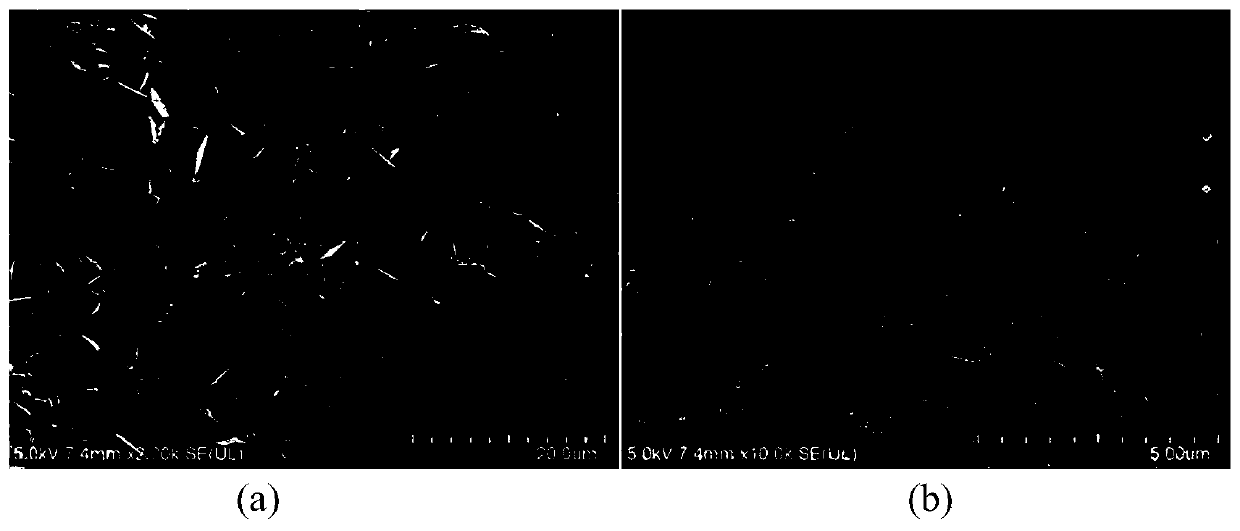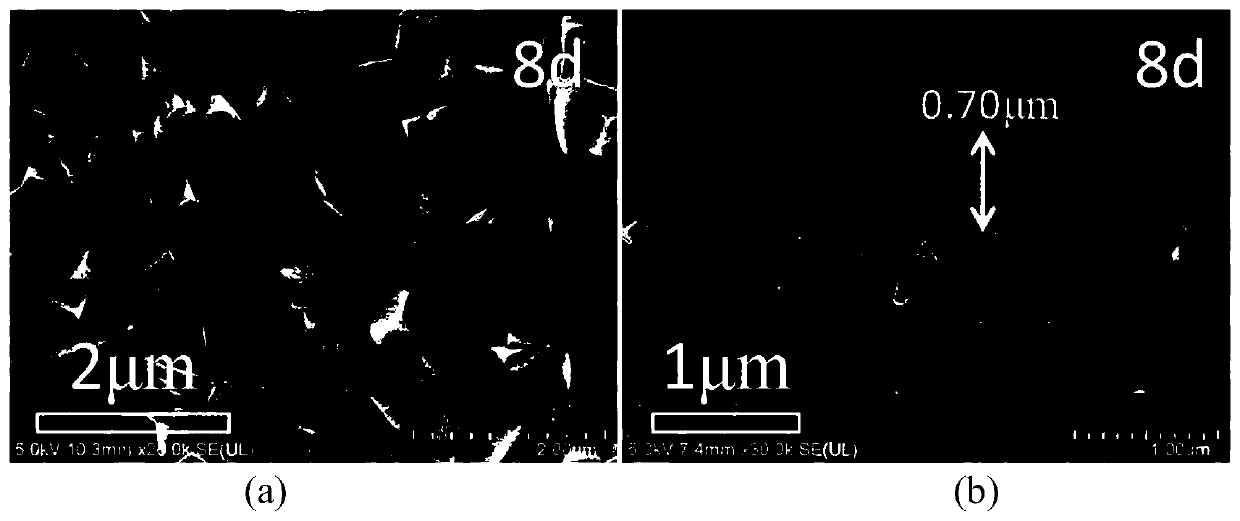Green synthesis method of ultra-thin SSZ-13 molecular sieve membrane
A green synthesis, molecular sieve technology, applied in molecular sieve and alkali exchange compounds, chemical instruments and methods, membrane technology, etc., can solve the problems of high unit price of membrane tube, unfavorable scale application, low permeability, etc., to improve permeability, reduce Equipment investment and the effect of reducing mass transfer resistance
- Summary
- Abstract
- Description
- Claims
- Application Information
AI Technical Summary
Problems solved by technology
Method used
Image
Examples
preparation example Construction
[0033] A green synthesis method of ultra-thin SSZ-13 molecular sieve membrane, by synthesizing SSZ-13 molecular sieve membrane at low temperature, using the characteristics that low temperature is conducive to nucleation and crystal growth rate is extremely slow, ultra-thin SSZ-13 is prepared Molecular sieve membrane (thickness to 500 nanometers), which greatly reduces mass transfer resistance and improves permeability. The synthesis temperature is lowered to ~100 degrees Celsius, and the SSZ-13 molecular sieve membrane can be synthesized under normal pressure, which avoids the use of high-pressure crystallization kettles and reduces equipment investment. The method includes:
[0034] 1) Mix the silicon source, ammonium trimethylammonium hydroxide and water, stir for 2 hours, then add hydrofluoric acid, the molar ratio of the reaction solution is: 1.0 SiO 2 :0.5HF:0.5TMAdaOH:3H 2 O (TMAdaOH: Trimethylammonium ammonium hydroxide), stirring for 30 minutes, to obtain a seed crys...
Embodiment 1
[0042] In this example, SSZ-13 molecular sieve membranes were synthesized by heating in a traditional oven. The specific steps are as follows:
[0043] Step 1: Synthetic formula of all-silicon CHA molecular sieve: 1.0SiO 2 :0.5HF:0.5TMAdaOH:3H 2 O (TMAdaOH: trimethylammonium adamantyl hydroxide). Mix ethyl orthosilicate and ammonium trimethyl ammonium hydroxide, stir for 4 hours, then remove excess water and ethanol in an oven at 80 degrees Celsius, then add hydrofluoric acid, and stir to obtain a synthetic mother liquor. Then crystallize at 453K for 24 hours to obtain an all-silicon CHA molecular sieve. The molecular sieve crystals are relatively large, about 8 microns. After being ball-milled by a ball mill, the crystals are pulverized to below 500 nanometers.
[0044] Step 2: Select a porous ceramic tube with a pore size of 100nm as the carrier, seal both ends of the carrier with glaze, wash and dry, seal the outer surface with PTFE tape, and brush the SAPO-34 molecular...
Embodiment 2
[0053] The difference from Example 1 is that in step 4, the crystallization kettle was placed in a 100°C oven for hydrothermal synthesis for 6 days, and the rest of the steps were the same as in Example 1.
[0054] The surface and profile of gained SSZ-13 molecular sieve membrane are as follows figure 2 As shown in the figure, it can be seen from the figure that the surface of the carrier is completely covered by cubic crystals, and the cross-linking between the crystals is very good (see figure a); the thickness of the film is relatively uniform, about 610 nm (see figure b).
[0055] The CO of the SSZ-13 molecular sieve membrane tube 2 / CH 4 The gas separation test results are shown below, at 0.14MPa, its CO 2 The average value of the permeability is 45×10 -7 mol / (m 2 s Pa), CO 2 / CH 4 The average value of separation selectivity is 132. It can be seen that, compared with the traditional high-temperature synthesis in Example 1, the low-temperature synthesis can greatly...
PUM
| Property | Measurement | Unit |
|---|---|---|
| Aperture | aaaaa | aaaaa |
Abstract
Description
Claims
Application Information
 Login to View More
Login to View More - R&D
- Intellectual Property
- Life Sciences
- Materials
- Tech Scout
- Unparalleled Data Quality
- Higher Quality Content
- 60% Fewer Hallucinations
Browse by: Latest US Patents, China's latest patents, Technical Efficacy Thesaurus, Application Domain, Technology Topic, Popular Technical Reports.
© 2025 PatSnap. All rights reserved.Legal|Privacy policy|Modern Slavery Act Transparency Statement|Sitemap|About US| Contact US: help@patsnap.com



